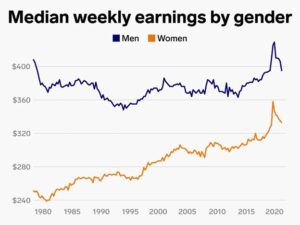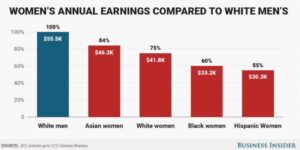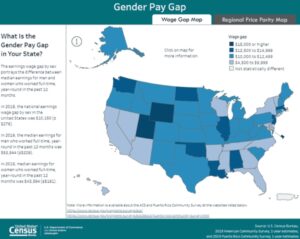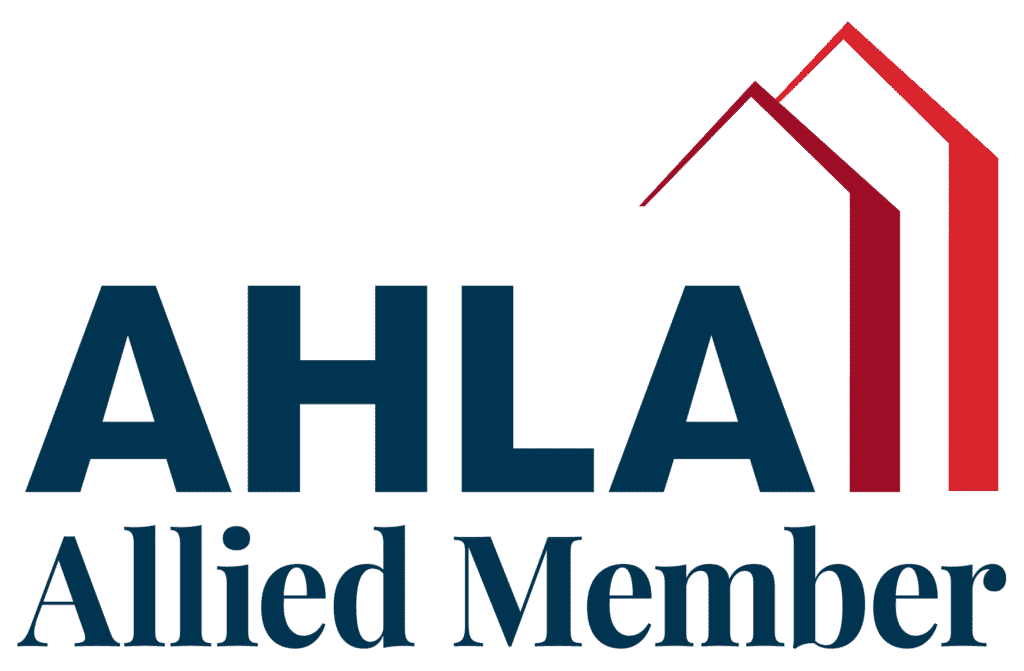Gender diversity and the status of women in the hospitality industry has been a concern for business leaders for years. And for good reason. Still today, there is a gap in pay between men and women. It’s a sad state of affair considering that women make up a large portion of the hospitality workforce. In fact, in the restaurant and food service industry, women represent half the workforce.
Why a Gap?
Historically, women took up roles in the lower quartile pay bands to allow for greater flexibility in their working hours. Some still do that. These positions often offer little scope for career progression. But today, women are contributing just as much, and sometimes more, to an organization as men. But they are not getting paid the same as men.

Management and chef positions, often referred to as back-of-the-house positions, have predominately been held by men. And still today, aggressive and misogynistic behavior is, unfortunately, a common occurrence in this area. There is an effort to close the gap with discrimination laws being enforced and business leaders coming to their senses. But it’s not enough. The segregation of women into the worse-paid jobs seems to be the main source of the gender wage gap.
Additionally, some women won’t speak up about the pay difference. A study by the BBC found only 27% of females are comfortable discussing pay raises or wage disparities with managers.

The Numbers Don’t Lie
The gender pay gap is real in the hospitality industry, according to the report, “WiHTL Gender Pay Gap in Hospitality.” The report found the average pay gap actually increased for the first time in three years from 5.4% to 7.7%. It found the average hospitality, travel and leisure company had 58% men in the highest-paid 25% of the workforce. This compared to 54% women in the lowest-paid 25% of the organization.
Salary surveys still reveal a discrepancy in what women make for doing the same job as a man. Unfortunately, there are far more men in higher paying, senior positions and technical roles than women. Females make up the largest portion of lower paid, unskilled jobs such as housekeeping. These are positions that have a high turnover rate and insecure seasonal work.

Taking Action
Thankfully, gender pay-gap reporting is one of the things being done to close the gap. Now that payroll systems are aligned with reporting, it is easier for companies to comply. Since April 2018, employers with over 250 employees are legally required to publish data relating to pay inequalities. Data published includes the pay and bonus figures between men and women, and includes data beginning in April 2017.
More and more companies are complying to the reporting initiative, and some voluntarily. Caesars announced that 99% of women at corporate had “no differences in pay compared to men in the same positions.” The company said it was the same for 98% of women working in nonunion roles at the company’s domestic properties. The reporting system works on several fronts:
- It makes the public aware of the company’s handling of the gender pay gap
- It makes the company aware of where it is failing and what needs improving
- Provides data points that are important for attracting talent
There are five suggested steps an organization can take to help close the pay gap once and for all. These include:
- Align the closing of the pay gap with the business strategy – If the organization is incorporating a diversity and inclusion plan, they should broadcast it from the mountaintops. By promoting diversity and inclusion both inside and out of the organization, the company can better attract talent and customers.
- Set realistic objectives – The objective can’t simply be “close the pay gap.” It has to be a strategic effort to strengthen the well-being of, and educate, the workforce. Set objectives and turn those into an action plan for delivery. For example, seeking and hiring more female chefs is a solid objective. The plan might be to join organizations that serve and promote the training of females in the culinary arts.
- Trust the data – “What gets measured gets done.” Seek out the latest data from Gallup or Women in Hospitality reviews. Tracking progress as well as targeting intervention and driving accountability will help support the action plan.
- Create honest dialogue – Don’t be afraid to share with team members where the company is failing in pay equality. Acknowledging deficiencies creates opportunities for creating plans for accelerating progress. Going into the dialogue with a mindset of encouraging and empowering female employees also helps to reduce turnover. A study found that 71% of female hospitality workers have considered quitting because they are unhappy with their work environment.
- Show them the way – Clear the path for both men and women to progress in their hospitality careers. Because men are typically hired into managerial roles, they have a progression path to follow. Unfortunately, the same is not true for women. By defining how women can advance in the organization, a path to greater salaries is opened. Since females are usually put into entry-level roles, knowing there is a way to advance is helpful. Unfortunately today, only 25% of female workers say their manager has shared specific steps towards their promotion. Just 18% say their manager has identified a mentor for them.
Taking these five steps won’t immediately fix the pay gap, but it’s a good start toward creating equality in pay. And there is an added bonus in taking some kind of initiative. When an effort is made, (any effort!) toward fixing the pay issue, employee engagement improves as well. Creativity juices flow and new ideas for solutions may be formed.
Where it Stands Now
Much more needs to be done to persuade women that hospitality can give them a meaningful career progression. Despite efforts to close the gender pay gap, it’s been a slow, tedious process. If it continues decreasing at its current rate, it will still take about 20 years before pay equality is reached. But there is hope. In recent years, there has been a societal shift to pay more attention to how “things are and always have been” in the hospitality industry.
With the passage of the requirement to publish data relating to pay inequalities, a snowball effect is taking place. More businesses are voluntarily reporting their data with boastful broadcasting. A survey conducted by SHRM found that 3 in 5 of respondents’ organizations (58%) voluntarily conduct pay equity reviews. These reviews identify possible pay differences among employees performing similar work that cannot be explained by job-related factors.
Good News on the Horizon
The pay gap has been gradually closing since 2015. And as we entered 2022, a study found that women were earning 82 cents for every $1 men earned. This is an increase of 7 cents since 2015. Still not perfect, but an improvement for sure. In time the gap will close even tighter. Until then, organizations need to take action to prevent pay discrepancies by increasing awareness and communicating zero tolerance for inequality.





